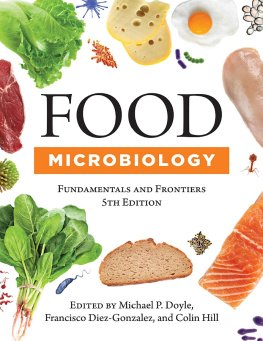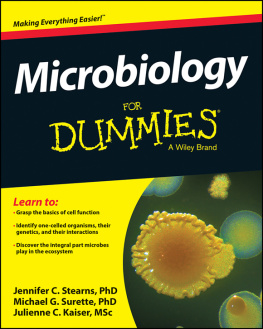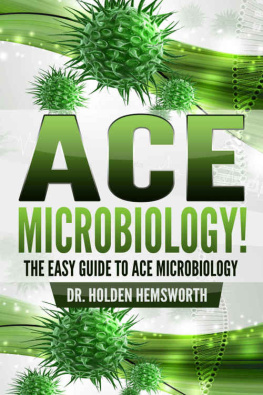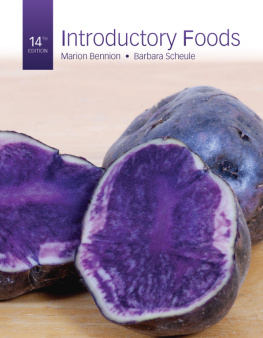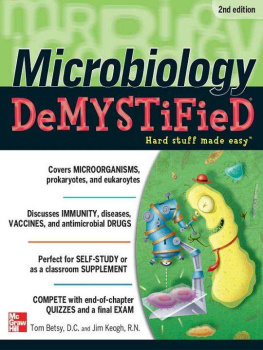Karl R. Matthews - Food Microbiology
Here you can read online Karl R. Matthews - Food Microbiology full text of the book (entire story) in english for free. Download pdf and epub, get meaning, cover and reviews about this ebook. year: 2019, publisher: Wiley, genre: Children. Description of the work, (preface) as well as reviews are available. Best literature library LitArk.com created for fans of good reading and offers a wide selection of genres:
Romance novel
Science fiction
Adventure
Detective
Science
History
Home and family
Prose
Art
Politics
Computer
Non-fiction
Religion
Business
Children
Humor
Choose a favorite category and find really read worthwhile books. Enjoy immersion in the world of imagination, feel the emotions of the characters or learn something new for yourself, make an fascinating discovery.

- Book:Food Microbiology
- Author:
- Publisher:Wiley
- Genre:
- Year:2019
- Rating:4 / 5
- Favourites:Add to favourites
- Your mark:
- 80
- 1
- 2
- 3
- 4
- 5
Food Microbiology: summary, description and annotation
We offer to read an annotation, description, summary or preface (depends on what the author of the book "Food Microbiology" wrote himself). If you haven't found the necessary information about the book — write in the comments, we will try to find it.
Authoritative coverage presented in a format designed to facilitate teaching and learning.
Food Microbiology — read online for free the complete book (whole text) full work
Below is the text of the book, divided by pages. System saving the place of the last page read, allows you to conveniently read the book "Food Microbiology" online for free, without having to search again every time where you left off. Put a bookmark, and you can go to the page where you finished reading at any time.
Font size:
Interval:
Bookmark:
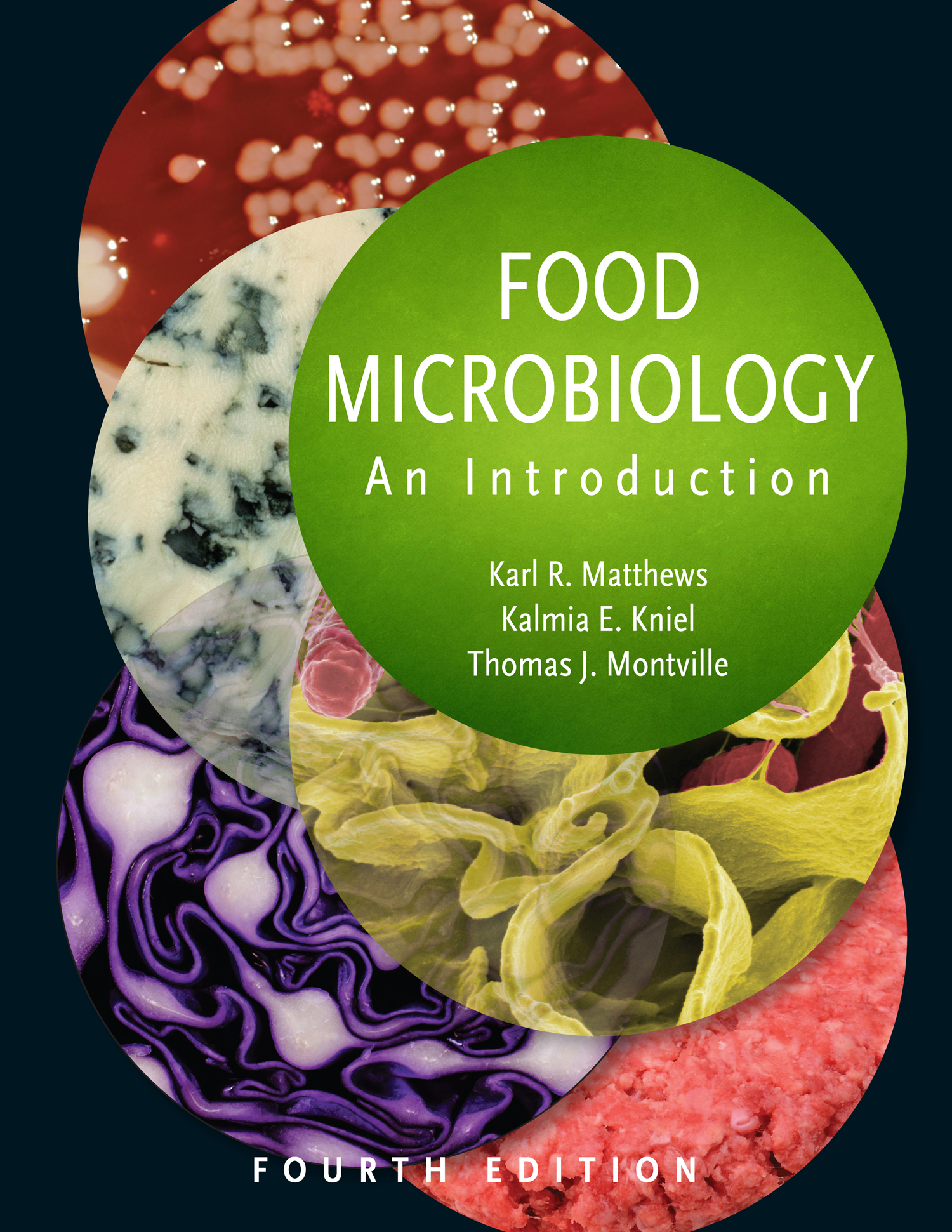
Food Microbiology
AN INTRODUCTION
FOURTH EDITION
FOURTH EDITION
Food Microbiology
AN INTRODUCTION
Karl R. Matthews, Kalmia E. Kniel, and Thomas J. Montville
Karl Matthews
Department of Food Science, Rutgers University, New Brunswick, New Jersey
Kalmia E. Kniel
Department of Animal and Food Sciences, University of Delaware, Newark, Delaware
Thomas J. Montville
Department of Food Science, Rutgers University, New Brunswick, New Jersey

Washington, DC
Copyright 2017 by ASM Press. ASM Press is a registered trademark of the American Society for Microbiology. All rights reserved. No part of this publication may be reproduced or transmitted in whole or in part or reutilized in any form or by any means, electronic or mechanical, including photocopying and recording, or by any information storage and retrieval system, without permission in writing from the publisher.
Disclaimer: To the best of the publishers knowledge, this publication provides information concerning the subject matter covered that is accurate as of the date of publication. The publisher is not providing legal, medical, or other professional services. Any reference herein to any specific commercial products, procedures, or services by trade name, trademark, manufacturer, or otherwise does not constitute or imply endorsement, recommendation, or favored status by the American Society for Microbiology (ASM). The views and opinions of the author(s) expressed in this publication do not necessarily state or reflect those of ASM, and they shall not be used to advertise or endorse any product.
Library of Congress Cataloging-in-Publication Data
Names: Matthews, Karl R., author. | Kniel, Kalmia E., author. | Montville, Thomas J., author.
Title: Food microbiology : an introduction / Karl R. Matthews, Department of Food Science, Rutgers University, New Brunswick, New Jersey, Kalmia E. Kniel, Department of Animal and Food Sciences, University of Delaware, Newark, Thomas J. Montville, Department of Food Science, Rutgers University, New Brunswick, New Jersey.
Description: 4th edition. | Washington, DC : ASM Press, [2017] | Revision of: Food microbiology / Thomas J. Montville, Karl R. Matthews, Kalmia E. Kniel. 3rd ed. 2012. | Includes bibliographical references and index.
Identifiers: LCCN 2017003891 (print) | LCCN 2017005242 (ebook) | ISBN 9781555819385 (hardcover) | ISBN 9781683673125 (ebook)
Subjects: LCSH: FoodMicrobiology.
Classification: LCC QR115 .M625 2017 (print) | LCC QR115 (ebook) | DDC 664.001/579dc23
LC record available at https://lccn.loc.gov/2017003891
doi:10.1128/9781555819392
Printed in the United States of America
10 9 8 7 6 5 4 3 2 1
Address editorial correspondence to: ASM Press, 1752 N St., N.W., Washington, DC 20036-2904, USA.
Send orders to: ASM Press, P.O. Box 605, Herndon, VA 20172, USA.
Phone: 800-546-2416; 703-661-1593. Fax: 703-661-1501.
E-mail:
Online: http://www.asmscience.org
Contents
.
Preface
T HE GLOBAL population is projected to increase to more than 9 billion by 2050. The study of food microbiology is essential to ensuring that there will be sufficient high-quality, safe food to feed these growing numbers. This book provides a taste of the complexity and challenge of this goal. The Fourth Edition has been thoroughly updated and revised to reflect the global nature of the field.
Todays students have a wealth of information available at their fingertips by virtue of access to the Internet. Utilizing and recognizing the quality of that information, however, calls for critical thinking, innovative approaches, and healthy skepticism. We have incorporated a greater breadth of material that underscores the global audience served by the textbook. New homework problems have been added based on positive feedback from instructors, and these problems serve as a vital learning tool.
Capturing the interest and attention of our target audience, undergraduates, is integral to opening the door to the field of food microbiology and from there to countless career opportunities. We have included authors notes, special box material written by students and international experts, chapter summaries, and a glossary. The book is user-friendly for instructors too; answers to selected critical thought questions are provided.
This book is divided into four sections. Instructors and students should be aware that the Fourth Edition contains a substantial amount of material not found in previous editions. Each chapter is self-contained, facilitating the instructors flexibility to present the material in different order.
The first section of the book covers the foundational material, describing how bacteria grow in food, how the food affects their growth, the control of microbial growth, spores, detection, and microbiological criteria. The material has application for food microbiology laboratory courses, too.
Instructors may choose to use the other three sections in virtually any order. The foodborne pathogenic bacteria are presented in alphabetical order in . A greater emphasis has been given to foodborne illness outbreaks occurring outside of the United States, and the chapter on Regulatory Issues discusses international regulations.
covers the chemical, biological, and physical methods of controlling foodborne microbes and closes by examining industrial and regulatory strategies for ensuring food safety.
The authors are grateful to the many students who provided perspective on the level and depth of coverage and contributed photographs that enhanced this edition. Special thanks go to Yangjin Jung, Hyein Jang, and Jingwen Gao for development of tables and figures for this edition.
We thank the team at ASM Press for facilitating completion of the book. The guidance of Larry Klein was essential to keeping us on track to complete this edition. Ellie Tuppers enthusiasm and eye for detail ensured that we would get it right.
We hope that Food Microbiology: An Introduction , Fourth Edition, makes the subject come alive and encourages you to explore careers in food microbiology. The food microbiome is complex and offers a wonderful playground for food microbiologists. Enjoy your adventure.
K ARL R. M ATTHEWS
K ALMIA E. K NIEL
T HOMAS J. M ONTVILLE
About the Authors

KARL R. MATTHEWS is Professor of Microbial Food Safety at Rutgers University. He received a Ph.D. from the University of Kentucky in 1988. Dr. Matthews has earned an international reputation for his work on the interaction of foodborne pathogens with fresh fruits and vegetables. This includes demonstrating the internal localization of bacteria during growth of leafy greens. He further showed that the internalization process is a passive event by demonstrating the internalization of fluorescent polystyrene beads. Dr. Matthews has also been active in research on antimicrobial resistance of foodborne bacteria and development of novel antimicrobial agents.
Authors Statement
My interest in microbiology was sparked one summer when I was working on a dairy farm. I regularly drank raw milk, but one time after doing so I became extremely ill (I wont go into the messy details). I became intrigued by microorganisms associated with milk and the disease bovine mastitis. These beginnings led me to an exciting career in food microbiology, where every day seems to bring a new challenge to be addressed. I have traveled throughout the world (Bhutan, China, Costa Rica, France, Iran, Ireland, Oman, Turkey, Peru, Philippines, and many, many more countries) conducting workshops and addressing issues associated with food safety. During those trips I have had the opportunity to enjoy the culture and cuisine of those countries and made many lasting friends.
Font size:
Interval:
Bookmark:
Similar books «Food Microbiology»
Look at similar books to Food Microbiology. We have selected literature similar in name and meaning in the hope of providing readers with more options to find new, interesting, not yet read works.
Discussion, reviews of the book Food Microbiology and just readers' own opinions. Leave your comments, write what you think about the work, its meaning or the main characters. Specify what exactly you liked and what you didn't like, and why you think so.


